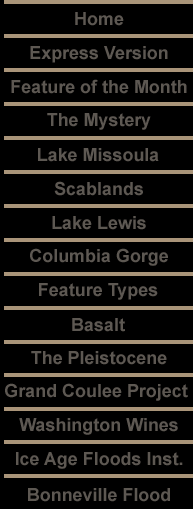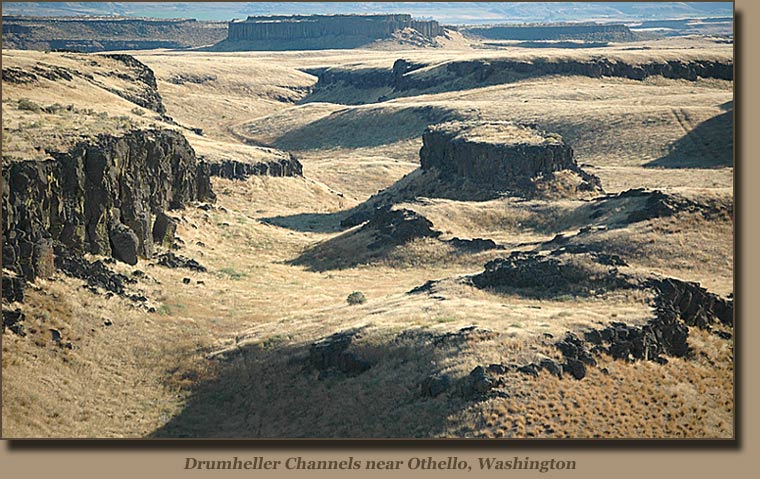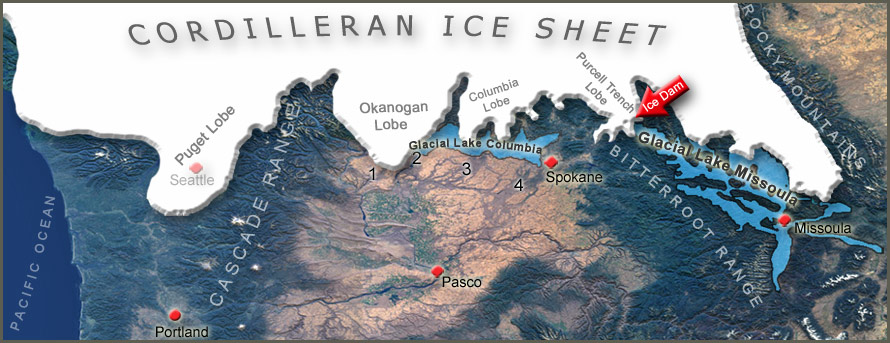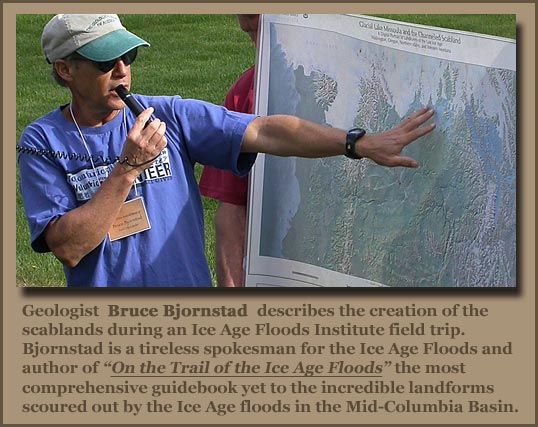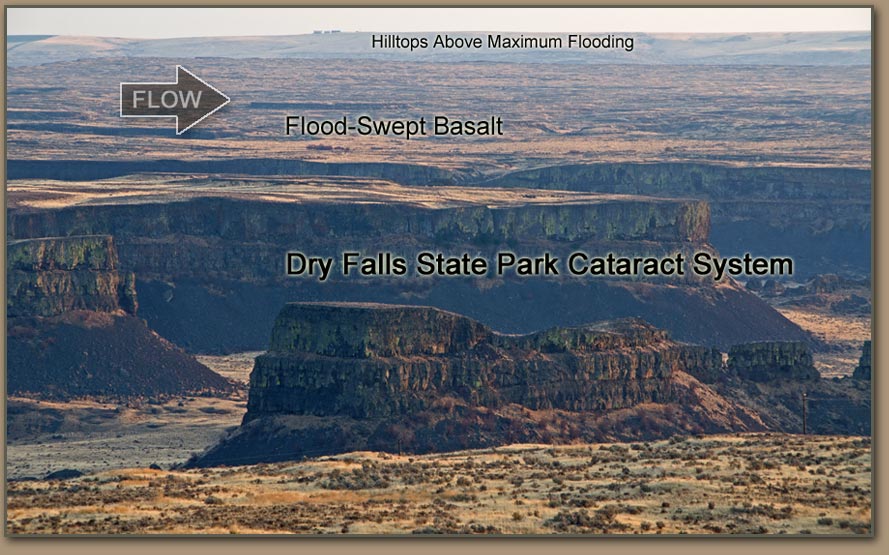Scabland: Where is it?
That part of Washington which contains the channeled scabland is defined roughly as follows: The northern boundary is the plateau region which begins south of Lake Roosevelt and the Spokane River from Grand Coulee to a few miles west of Spokane. The western limit follows Grand Coulee to the town of Soap Lake, then to the Columbia River near Quincy, and south along the Columbia to the Saddle Mountains. The eastern boundary approximates an imaginary line from Spokane south to where State Road 127 crosses the Snake River. The southern limit is the Saddle Mountains from Mattawa to Othello, and then an imaginary line running southeast from Othello to the Snake River.
This is a vast expanse of real estate. But while it contains the channeled scabland, only part of it actually rates as scabland. Bretz estimated that there are 2,000 square miles of scabland within the region. However, in their book Cataclysms on the Columbia, authors John Elliot Allen and Marjorie Burns include 1,500 square miles in only that part of the overall scabland region south and east of Interstate 90 and U.S. 395 from Spokane to Ritzville and Pasco. Allen and Burns do not offer an estimate for the square mileage of scabland elsewhere in the Columbia Basin, but their calculation would suggest a larger overall total than Bretz’s.
Many areas within the above boundaries clearly are not scabland. The rounded Palouse-type hills which retained topsoil in spite of the floods are intensively used today for grain production. A belt of these hills north of Interstate 90 between the town of Sprague and the city of Moses Lake provides one example. The eastern fringe of the scabland region is a mixture of Palouse hills and scabland. Certain coulee valleys qualify geologically as scabland, but enough soil from nearby hills has eroded into them that they, too, are farmed. A motorist driving Interstate 90 between Moses Lake and George, Wash., will observe little or nothing out of the ordinary while passing among field of sweet corn, potatoes, peas, alfalfa, or mint. Tracts of scabland such as those southwest of Sprague Lake or in the Drumheller Channels [south of Potholes Reservoir], however, are only fit for cattle grazing and isolated hay fields.
|




